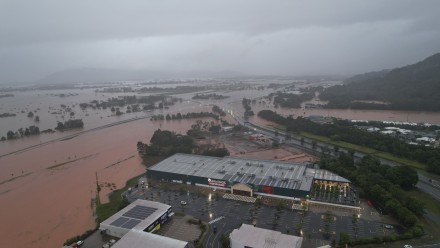ANU Climate, Energy and Disaster Solutions Highlights 2023
Global average temperatures hit 1.48 degrees Celsius above the pre-industrial reference for the first time in 2023, taking us perilously close to 1.5 degrees of warming. The impacts were felt globally. Unprecedented wildfires in Canada released more than 1.5 billion tonnes of carbon, triggering a health crisis in New York City. These fires may mark a shift in fire patterns in these forest areas, threatening their value as an important carbon sink. Heatwaves claimed tens of thousands of lives across Europe and Asia. Deaths in developing countries likely went under-reported, as many labourers in India continued to work in the extreme heat. Floods affected almost every continent, with thousands dying in Libya after a storm unleashed as much as 400mm of rain in a day in some cities. The annual Arctic sea ice minimum was the sixth lowest on record while Antarctic sea ice reached its lowest maximum ever. And the list goes on and on.
Against this backdrop, communities worldwide have been putting their noses to the grindstone. In December, the COP28 agreement was the first to explicitly call for a transition away from fossil fuels. In September, renewable energy production on the East Coast of Australia supplied nearly 100% of the market for half an hour, demonstrating its rapidly growing capacity. In March, the United Nations Intergovernmental Panel on Climate Change (IPCC) concluded its Sixth Cycle with its comprehensive Synthesis Report. While the authors noted that warming has already reached 1.1 degrees Celsius and emissions continue to increase, they have also laid out a pathway to achieving the 1.5 degree target by making deep and rapid cuts. The window of opportunity is closing, but emission-reduction policies are already having an impact. However, the climate adaptation gap continues to grow. All the solutions we need are available and gaining popularity, such as renewable energy, improved urban infrastructure, better forest management and avoided food wastage. Importantly, the report emphasises that every increment of warming avoided means lives and money saved, environments maintained and disasters avoided. The message is clear – it can be done and it must be done.
Now in its third year, The Australian National University (ANU) Institute for Climate, Energy & Disaster Solutions (ICEDS) remains focused on advancing innovative solutions to climate change, the energy transition and disaster risk reduction. The University’s unique transdisciplinary approach to tackling these complex and interwoven issues is strengthened through collaboration across our growing member base.
We are proud to share with you just a small selection of the world-leading work being undertaken by ANU researchers and staff. On behalf of the Institute, we would like to thank you for your support in 2023 and encourage your continued engagement with the University on this vital work.
Professor Mark Howden, Director & Head of Climate
Professor Frank Jotzo, Head of Energy, and
Associate Professor Roslyn Prinsley, Head of Disaster Solutions
ANU Institute for Climate, Energy and Disaster Solutions (ICEDS)








